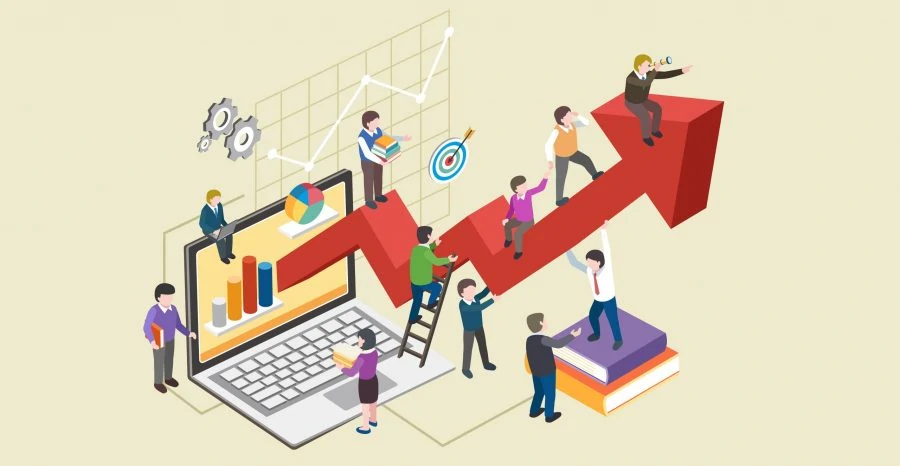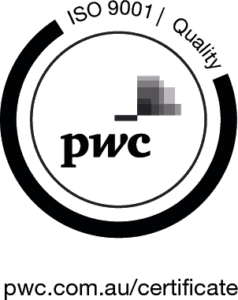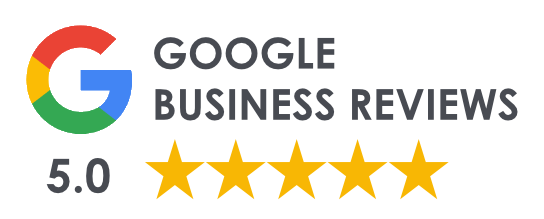Understanding Business Ecosystems – Another level of collaboration
Creating or being part of a business ecosystem that works in unison — with a shared set of common goals between organisations helping each other — will ultimately boost growth and create value.
If there’s something that we have learned in the past months is that no organisation survives – nor thrives – alone. The future is about connectivity, and all organisations are part of an intricate network where everyone depends on each other to survive. If one part of this network stops it may cause a chain reaction that is likely to affect the entire system. It is just like a natural ecosystem, where all elements are somehow interconnected and interdependent.
Business ecosystems is a concept that is becoming increasingly popular lately, and in this article, we are going to explore the topic in order to understand the basics of what it means and why it is crucial for organisations to comprehend and embrace this new mindset.
Business Ecosystem Definition
Deloitte research1 has summarised Business Ecosystems as “dynamic and co-evolving communities of diverse actors who create and capture new value through increasingly sophisticated models of both collaboration and competition”.
In addition, The Design Thinking Playbook2 describes business ecosystems as economic communities supported by various organisations and individuals that are in interaction, and compares each business ecosystem with organisms of the business world, developing their skills and strengthening their market role in the system over time.
In other words, a Business Ecosystem is a group of linked “organisms” with a similar vision that interact to support each other, joining forces to generate a high level of collaboration and together achieve more. These “organisms” are basically the stakeholders in a network of companies such as manufacturers, suppliers, retailers, final users, and so on. Usually, these ecosystems have a leader (or a centre), which is the main business in the group who created – on purpose or not – the opportunity for other members to interact.
Real Examples
Apple is a great example of a successful Business Ecosystem, and this is well illustrated in The Design Thinking Playbook as shown below:

In this scenario, Apple is the ecosystem leader who has created the opportunity through the Apple Platform. Note that the network is formed by many stakeholders that may or may not interact directly. It also contains other businesses that are competitors in certain areas (Google with its own line of smartphones and operating system), but they still work together in others (search engine on Apple devices).
Surrounding it, other brands and businesses also create and manufacture gadgets and accessories compatible with the Apple products focusing on the final users. A community of software and app developers also interact, though indirectly, with users via the Apple platform. There are also manufacturers, distributors, retail stores, resellers, authorised service providers, the media industry, and so on, involved in this system.
We can see in this case the correlation between all the members, the way that value is exchanged (products, services, money, credit, information and intangibles), and how they are dependent on each other in this environment. This whole system delivers great value for Apple users, creating a high level of customer satisfaction and benefiting all actors in the process. In this instance, it is clear that Apple alone, without its ecosystem, wouldn’t be able to deliver so much value to its customers and as a consequence, wouldn’t be so attractive.
To give a non-digital/tech example, our business, ISO Certification Experts, is also part of a Business Ecosystem. For those who are not aware, ISO (the International Organization for Standardisation), in Switzerland, is responsible for creating the standards such as the ISO 9001 Quality Management System Standard. However, they do not certify organisations. There are Accreditation Bodies in each region of the world who provide accreditation to other businesses (Conformity Assessment Bodies) worldwide to be able to audit and certify other organisations.
In this network, we are a Consulting Business, providing assistance to organisations that wish to successfully obtain or maintain their ISO Certifications. Additionally, there are organisations that create the demands for the certifications – they could be government bodies or private companies establishing this in their tender or contract requirements, and so on.
Education providers are also an actor here, providing training to qualify people to work in this industry. Furthermore, some other businesses get indirectly involved in this network by providing support services such as software and other business related products and services. In this environment, we all depend on each other to continue to operate, and without any of these “branches”, the cycle wouldn’t be complete or even exist.
Why does it matter?

In this new world, especially in the technology industry, a successful and well designed ecosystem can provide many benefits. The main ones are innovation and competitive advantage, as an ecosystem can coevolve, share capabilities, and break the barriers of individual organisation’s limitations and competencies to scale and grow further. This allows organisations to not only get a bigger slice of the market share, but also expand the market and create new opportunities.
No organisation is an island, and the future of business is about connectivity, joining forces and growing together. Julian Birkinshaw explains in this HBR Article3 that the business ecosystems concept challenges the conventional thinking that still drives many organisation’s strategies based on market positioning and resources. If you analyse companies like Google, Alibaba, and Uber, you will realise that they actually create value by connecting and linking people and other organisations, rather than selling their own products or services.
The importance of understanding what a Business Ecosystem is, is to reflect and recognise the ecosystems we are a part of, and our role in it. We are all part of an ecosystem, and liking it or not, understanding this helps us to think more strategically about the kind of environment we would like to be a part of, how to improve the mutual gains and the value exchanged in these relationships, and what other possibilities are available for us to explore.
Another benefit of designing a new ecosystem or fully understanding the one you are in, is to analyse all the possibilities it provides to create new opportunities and streams of revenue or value creation. By analysing the network, you can find gaps to fill in, and new connections that can be made to improve the relationship with other members of the system. It is a great source of competitive advantage and innovation for your business to learn new ways to deliver more through the ecosystem collaboration, and possibly even rethink or redesign your business model, if this is the case.
Start with a Framework

As mentioned before, a Business Ecosystem can be seen as a hyper level of collaboration involving multiple actors. As per any type of collaboration, you should start with making sure your values and goals are aligned with your collaborators, and ensure everyone benefits from it.
For this purpose, the ISO 44001:2017 Collaborative Business Relationship Management Systems Standard provides an excellent framework to help organisations to plan, implement and manage collaborative business relationships. In February 2020 we released a blog explaining more about the ISO 44001 Standard and its benefits. So if you would like to learn more, check it out here: Business Collaboration Can Achieve Great Things.. If It’s Done Well.
Many organisations are already part of an informal collaborative ecosystem, but fail in identifying and managing it properly to take advantage of the benefits and succeed. By implementing the ISO 44001 framework in your business, you will be taking your first step towards successful collaborations within your ecosystem.
References:
1Deloitte University Press, 2015. “Business Ecosystems Come of Age”, https://www2.deloitte.com/content/dam/Deloitte/za/Documents/strategy/za_Business_ecosystems_come_of_age_LR.pdf
2The Design Thinking Playbook, https://www.design-thinking-playbook.com/playbook-en
3Birkinshaw, J (2019). “Ecosystem Businesses are changing the rules of strategy”. Business Harvard Review. https://hbr.org/2019/08/ecosystem-businesses-are-changing-the-rules-of-strategy
About the author
Andressa (alias Andy) is the General Manager of ISO Certification Experts and ICExperts Academy, heading our Marketing department and coordinating the internal improvement initiatives and projects. With an MBA in Project Management, and over 10 years of experience in customer service and project management across many industries, she brings valuable knowledge to the business and our operations. Alongside her professional expertise, Andressa holds a genuine passion for sustainability and the environment.
All information on this blog site is for informational purposes only. As this information is based on our professional experience, opinion, and knowledge, we make no representations as to the suitability of this information for your individual business circumstances. Especiality Pty Ltd trading as ISO Certification Experts and all related businesses and brands will not be liable for any errors, omissions, legal disputes or any damage arising from its display or use. All information is provided as is, with no warranties and confers no rights.
We will not be responsible for any material that is found at the end of links that we may post on this blog site. The advice, ideas, and strategies should never be used without first assessing your own personal business situation or seeking professional and/or legal advice. Information may also change from time to time to suit industry and business needs, requirements and trends.
















